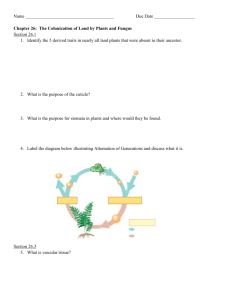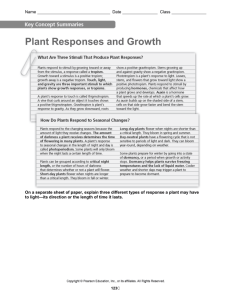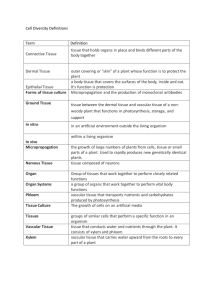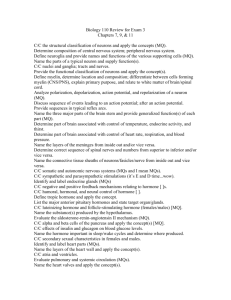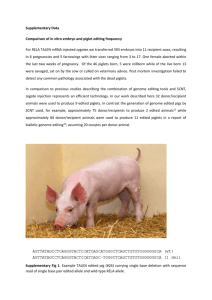Unit 5 Homeostasis Study Guide Homeostasis: maintaining a
advertisement
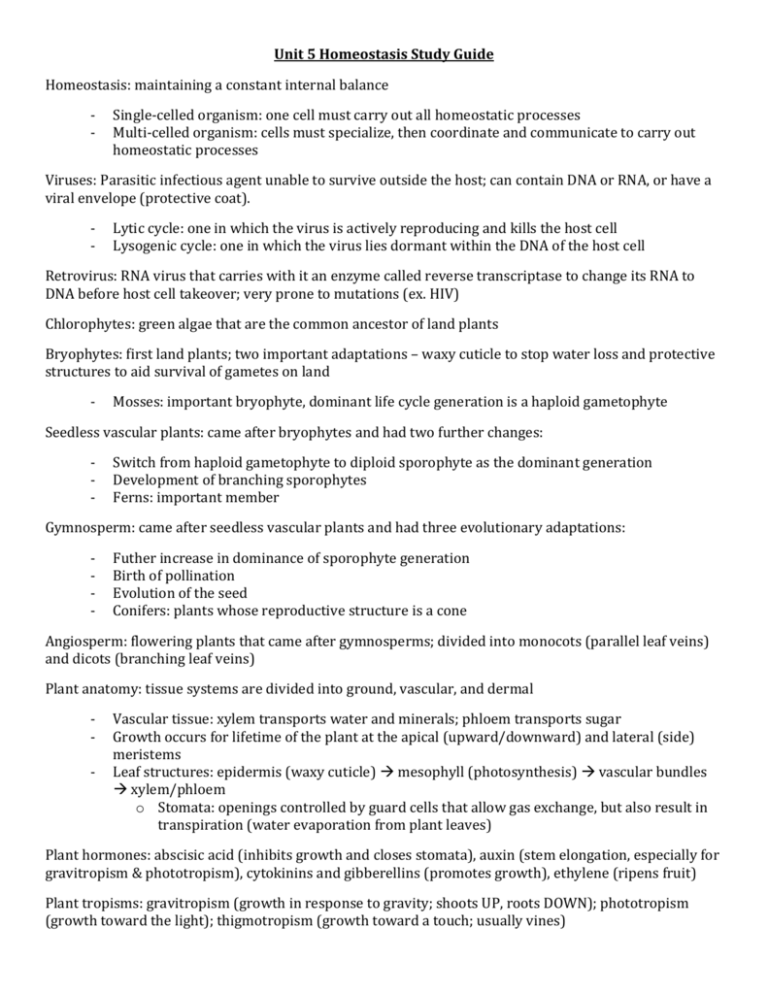
Unit 5 Homeostasis Study Guide Homeostasis: maintaining a constant internal balance - Single-celled organism: one cell must carry out all homeostatic processes Multi-celled organism: cells must specialize, then coordinate and communicate to carry out homeostatic processes Viruses: Parasitic infectious agent unable to survive outside the host; can contain DNA or RNA, or have a viral envelope (protective coat). - Lytic cycle: one in which the virus is actively reproducing and kills the host cell Lysogenic cycle: one in which the virus lies dormant within the DNA of the host cell Retrovirus: RNA virus that carries with it an enzyme called reverse transcriptase to change its RNA to DNA before host cell takeover; very prone to mutations (ex. HIV) Chlorophytes: green algae that are the common ancestor of land plants Bryophytes: first land plants; two important adaptations – waxy cuticle to stop water loss and protective structures to aid survival of gametes on land - Mosses: important bryophyte, dominant life cycle generation is a haploid gametophyte Seedless vascular plants: came after bryophytes and had two further changes: - Switch from haploid gametophyte to diploid sporophyte as the dominant generation Development of branching sporophytes Ferns: important member Gymnosperm: came after seedless vascular plants and had three evolutionary adaptations: - Futher increase in dominance of sporophyte generation Birth of pollination Evolution of the seed Conifers: plants whose reproductive structure is a cone Angiosperm: flowering plants that came after gymnosperms; divided into monocots (parallel leaf veins) and dicots (branching leaf veins) Plant anatomy: tissue systems are divided into ground, vascular, and dermal - Vascular tissue: xylem transports water and minerals; phloem transports sugar Growth occurs for lifetime of the plant at the apical (upward/downward) and lateral (side) meristems Leaf structures: epidermis (waxy cuticle) mesophyll (photosynthesis) vascular bundles xylem/phloem o Stomata: openings controlled by guard cells that allow gas exchange, but also result in transpiration (water evaporation from plant leaves) Plant hormones: abscisic acid (inhibits growth and closes stomata), auxin (stem elongation, especially for gravitropism & phototropism), cytokinins and gibberellins (promotes growth), ethylene (ripens fruit) Plant tropisms: gravitropism (growth in response to gravity; shoots UP, roots DOWN); phototropism (growth toward the light); thigmotropism (growth toward a touch; usually vines) Driving force for H2O movement in plants: transpiration is the major driving force that draws water up the xylem through the cohesive nature of water molecules; osmosis and capillary action are minor contributors Negative feedback systems: hormone signal acts to directly, or indirectly, inhibit further release of the hormone/response of interest (ex: testosterone level moderation or thermoregulation) Positive feedback systems: hormoe acts to directly, or indirectly, increase secretion of the hormone or response (ex: childbirth or urination) Endotherm: warm-blooded animals with adaptations (e.g. shivering, panting, sweating) to maintain a constant body temperature Ectotherm: cold-blooded animals that either allow their body temperature to match that of the environment or use behaviors to semi-regulate it (e.g. lay in the sun or shade) Cell signaling - Local: Paracrine (hormones or chemicals released to neighbors), synaptic (hormone or chemical released to ONE neighbor), gap junctions in animals or plasmodesmata in plants, action potentials (using concentration gradients to create moving charges/electrical signals) Long Distance: hormones or chemicals release into the bloodstream (endocrine system); chain of cells using local communication (nervous system) Nervous system: divided into two parts- central nervous system (brain and spinal cord) and peripheral nervous system (sensory nerves); neurons send signals through a combination of action potentials and chemical signals (neurotransmitters) Immune system - Nonspecific immunity: prevention of ANY invader into the body Specific immunity: multilayered defense mechanism that “remembers” prior invaders and prevents secondary infections Embryology (the study of embryonic development): - Morula: what we call the zygote when it has become a ball of 16 cells Blastula: what we call the zygote when it has become a ball of 32 cells and implanted in the wall of the uterus Gastrulation: the blastula folds inward and creates three germ layers o Endoderm: inner layer- gut lining, digestive system, liver, and lungs o Mesoderm: middle layer- muscle, veins/arteries, bones o Ectoderm: outer layer- skin, nerves Cellular differentiation: - Location: differentiation based on germ layer or location in zygote Induction: the ability of one group of cells to influence another to differentiate Homeotic genes: universal genes found in all organisms that regulate or direct the body plan (the eye hox genes from a fly will still perfectly make the eyes of a mouse if transferred) Stem Cells: undifferentiated cells that can be used for medical purposes
